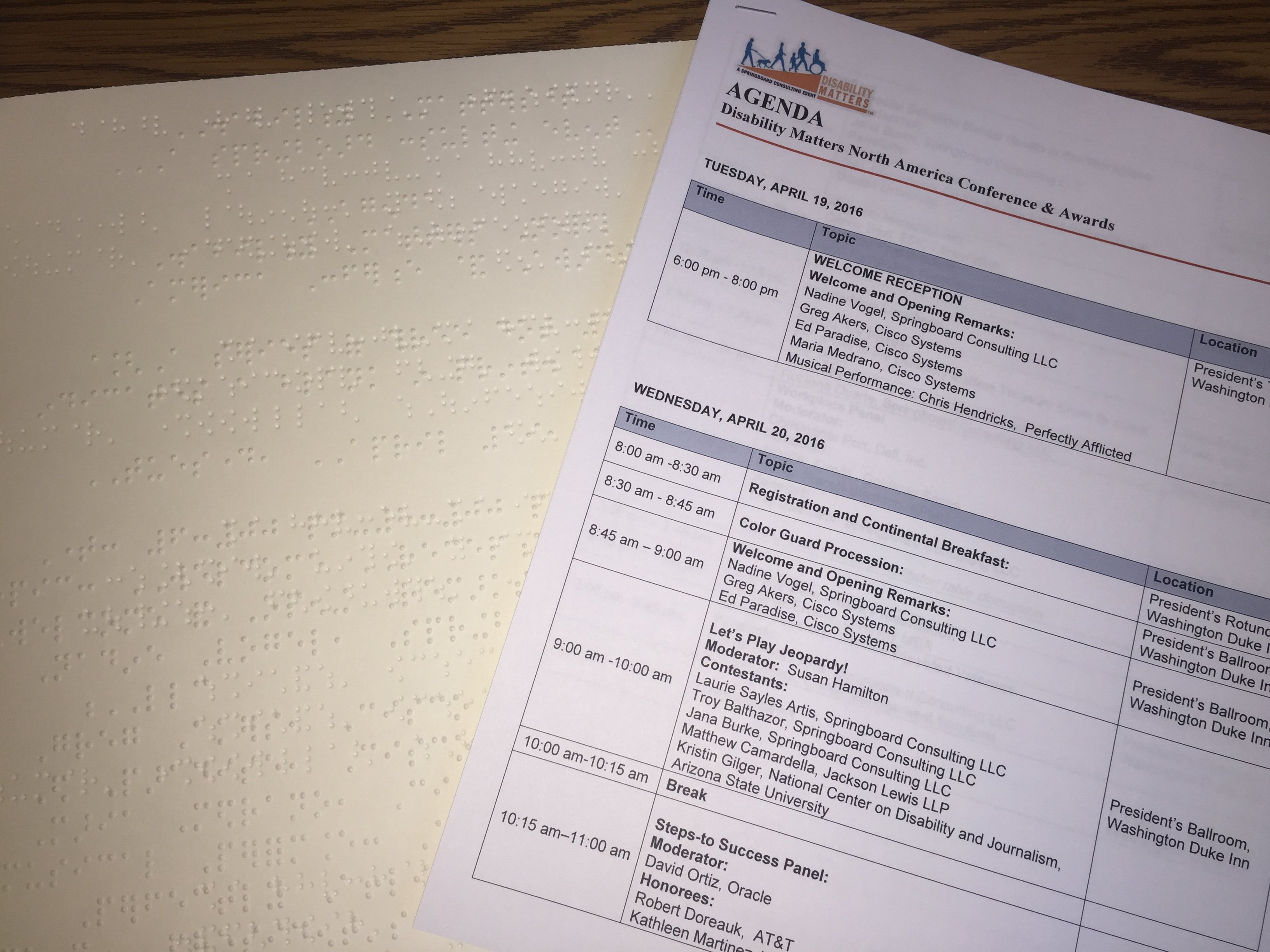Springboard Consulting’s mission is to mainstream people with disabilities in the global workforce, workplace, and marketplace. By definition, the Merriam Webster dictionary refers to this as “meaning to cause someone or something to be included in or accepted by the group that includes most people.” I think of it as leveling the playing field so everyone has the same opportunities for success whether the individual is deaf, blind, uses a wheelchair, or has some other disability and no different if the individual is in the classroom, in an office, or at a conference.
At Springboard’s Disability Matters Conference and Awards Gala, an annual corporate event that takes place in North America, Europe, and Asia, we ensure that everyone—from the attendees and the presenters to the staff and volunteers—have the ability to fully participate in every aspect of the conference, which includes providing the conference program in braille. Someone recently asked my conference manager why we placed a braille program on every table instead of just the table where it was “needed.” It was an interesting question and one that I believe speaks to society’s approach to mainstreaming individuals with disabilities in the first place.

Although Springboard’s event registration process does include asking registrants if they require a reasonable accommodation for any part of the event, there are some things we believe should be provided whether it’s requested or not. Such provisions are the use of CART, real-time captioning, and braille programs. Yes, we could just wait to see who makes a request for a braille program but what if that request got missed or the individual forgot to make the request in the first place or it was a last minute registration? In any of those instances, the attendee would not have had equal access to the necessary information to effectively participate in the conference.
As for why the braille program on every table, there are two reasons: The first is to ensure that if an individual were to change their seat—whether for an hour or for the entire day—they would still have full access to the information. The second is for the event to serve as a model for mainstreaming people with disabilities. A good friend of mine who has been blind since birth often says that when we are at an event together, she is mainstreaming me into her world by allowing me to keep the lights on or having the agenda available in print (neither of which is helpful to her). Other than braille on elevator buttons and the like, most sighted individuals have never seen braille. It’s actually fun to watch them pick up these braille programs, knowing what the printed program says, and trying to see if they can read it. This is about providing access and empowering everyone.
Next time you hold an event or conference, consider the powerful possibilities created by offering your programs and agendas in braille!
By Nadine Vogel
Springboard Consulting, LLC
